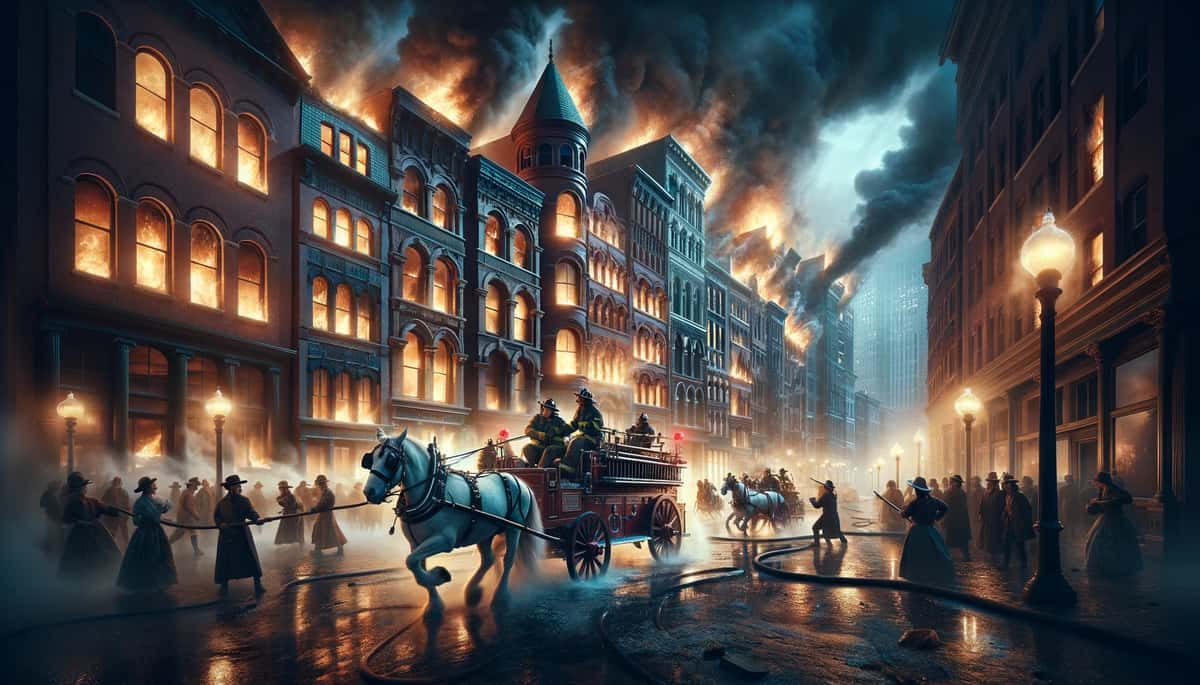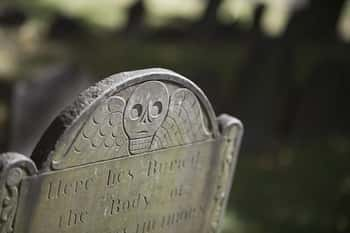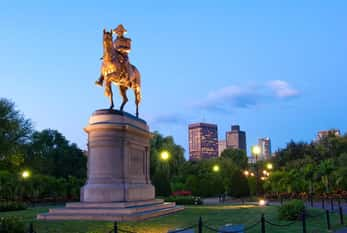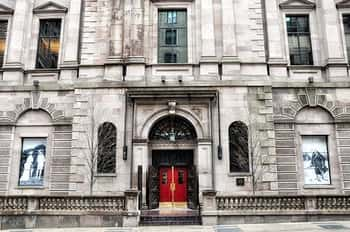Any city worth its salt has seen its share of fire, and Boston is no exception.
There’s an interesting dynamic between fires and history. The bigger the fire, the greater its historical importance. However, bigger fires are also excellent at covering up evidence of their existence.
Boston’s Great Fire of 1872 is a good example of this dichotomy. Almost 800 buildings in downtown Boston burned to the ground. Damages were estimated at over $70 million - almost $1.5 billion in today’s money.
It was a disastrously perfect storm, resulting from the tragic combination of fire (of course) and gross negligence by city officials.

Today, all that remains of the Great Fire of 1872 is a pair of plaques placed on buildings in the area affected by the fire. Many native Bostonians aren’t aware of the full story of the 1872 fire, which prompts a peculiar question:
How does such an important historical event become just a ghost of a memory? The answer lies in who could be held accountable.
After Chicago’s Great fire of 1871, fire chiefs across the country descended upon the Windy City. They wanted to figure out what went wrong and how to prevent it in their own cities.
One such chief was John Damrell from Boston. He took everything he learned back to Boston and noted that the water pressure coming from the old water main lines was inadequate.
He asked the local government for funding to rework the water lines in the city but was denied. Damrell was told not to magnify the needs of his department
.
The officials figured that with most of Boston’s buildings being made from granite or brick, the issue Damrell brought up was way overblown.
Besides, back in 1852, they implemented the first telegraph-connected fire alarm system.
The fire alarm boxes could be activated by citizens, alerting firefighters to the fire and its location. It was a fairly robust and advanced system for the mid-1800s.
The problem was that the alarms were kept locked to avoid false alarms. Keys were only given to a few citizens. In case of a fire, these keyholders would need to be located so they could sound the alarm.
The thing about fires is that they spread very quickly, and getting to them swiftly is the best way to stop the spread. Citizens having to find a keyholder was an avoidable inconvenience that allowed the fire more time to grow.
The Great Fire of 1872 started on November 9, around 7:20 pm in a commercial warehouse located at 83-87 Summer Street. Its cause is unknown.
Over the next 12 hours, 776 buildings were destroyed and 13 people died, including two firefighters.
The fire was eventually stopped in a successful effort to save the Old South Meeting House - famous for being a rallying point for the organizers of the Boston Tea Party.
Low water pressure and practically useless alarms weren’t the only issues Boston’s firefighters faced.
The horses used to pull fire engines were suffering from a flu-like infection that was sweeping through the Northeast. Fortunately, John Damrell had hired 500 men to take their place, but they weren’t as quick as the horses.
There was also no enforced building code in Boston at the time. This meant that buildings were tightly packed, streets were narrow, and ladders couldn’t reach the upper floors of some buildings.

Fire safety measures were not encouraged. Most buildings were insured at least at the full value of the property and its contents. It wasn’t uncommon for building owners to commit arson to get insurance money. For all we know, that’s how the Great Fire of 1872 started.
All in all, the fire of 1872 was a disaster that could’ve been largely avoided. John Damrell recognized issues with Boston’s fire preparedness, but city officials hardly gave him the time of day, much less proper funding.
After the fire, citizens petitioned officials to widen and straighten roads in downtown Boston, hoping to avoid future fires. The petition was granted, and the area affected by the fire was redesigned.
City officials made other changes to improve fire fighting and prevention, including replacing the aging water mains. John Damrell retired from his position - it’s unclear if his retirement was voluntary or if he was made to be a scapegoat.
Regardless, he had better things to do. Damrell would go on to create the National Association of Fire Engineers (NAFE).
The NAFE is still in operation today, now called the International Association of Fire Chiefs. They’re a big part of the reason we don’t see these kinds of fires today.

When a major historical event falls out of public awareness, it’s sometimes because someone decided they didn’t want it discussed.
It seems that so little is known about the Great Fire of 1872 because city officials at the time knew they were somewhat responsible. They couldn’t erase memories of the fire, but they could downplay it so that it wouldn’t tarnish their legacy.
In 1889, a newspaper article lamented the pending destruction of the old May Mansion. It had been built in the late 1700s and was one of the few buildings that stood through the Great Fire.
On its semi-charred exterior walls, one could see the last physical evidence of the blaze. With it gone, the story of the Great Fire of 1872 became nothing more than a memory, doomed to slowly be forgotten by the citizens of Boston.
That’s not to say nobody’s heard of it, but those who have rarely know anything more than There was a fire in 1872
, and that’s a tragically incomplete story.
Former Harvard professor Jorge Santayana once wrote the oft-misquoted aphorism, Those who cannot remember the past are condemned to repeat it
.
That idea was exemplified in the 1872 fire by city officials who acted like the Chicago fire of 1871 didn’t even happen.

Learn more about Boston's most haunted Cemetery

Boston Common is Boston's haunted hotspot

Boston's haunted Library, haunted by Literary Giants